Commander-in-chief of the Forces
Le commander-in-chief of the Forces ou seulement commander-in-chief (C-in-C), est le salarié à la tête de l'Armée de l'Angleterre (en) de 1660 à 1707. Elle est remplacée en 1707 par l'Armée de terre britannique, fondée cette année-là, en incluant les régiments écossais. Le C-in-C est la tête de cette armée de 1707 jusqu'à 1904. Ensuite, ce poste est remplacé de 1904 à 1908 par le chief of the General Staff puis à partir de 1908 par le chief of the Imperial General Staff.
À la suite de la mise en vigueur du War Office Act de 1870, dans le cadre des réformes de Cardwell, le C-in-C est subordonné au secrétaire d'État à la Guerre du Royaume-Uni. Le plus souvent, les C-in-C ne sont pas membres du gouvernement. L'Armée est représentée auprès du gouvernement par différents officiers : le Paymaster of the Forces, le Master-General of the Ordnance, le Secretary at War, le secrétaire d'État à la Guerre et aux Colonies, le secretary of State for War et, depuis 1964, par le secrétaire d'État à la Défense.
Détenteurs du poste
General-in-chief command (1660-1793)
| Rang | Nom | Illustration | En poste | Source |
|---|---|---|---|---|
| Général | George Monck, 1er Duke d'Albemarle |  |
3 août 1660 – 3 janvier 1670 | [1] |
| Inoccupé | 3 janvier 1670 – 30 mars 1674 | |||
| Général | James Scott, 1er duc de Monmouth |  |
30 mars 1674 – | [2] |
| Inoccupé | – 3 juin 1690 | |||
| Général | John Churchill, 1er duc de Marlborough | .jpg.webp) |
3 juin 1690 – 30 avril 1691 | [3] |
| Général | Meinhardt Schomberg, 3e duc de Schomberg | 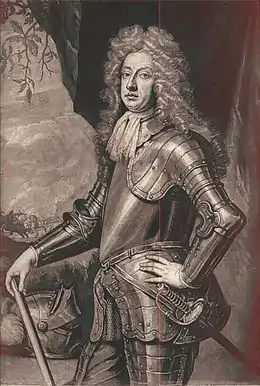 |
30 avril 1691 – 1691 | [4] |
| Inoccupé | 1691 – 24 avril 1702 | |||
| Général | John Churchill, 1er duc de Marlborough | .jpg.webp) |
24 avril 1702 – 1708 | [3] |
| Inoccupé | 1708 – | |||
| Général | James Butler, 2e duc d'Ormonde |  |
– 1714 | [5] |
| Inoccupé | 1714 – | |||
| Field marshal | John Dalrymple, 2e comte de Stair | _General_and_Diplomat.jpg.webp) |
– 1744 | [6] |
| Field marshal | George Wade |  |
1744 – 1745 | [7] |
| Inoccupé | 1745 – 1745 | |||
| Général | Prince William, duc de Cumberland | 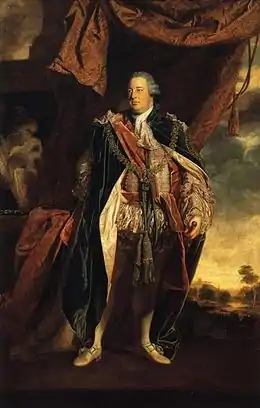 |
1745 – 24 octobre 1757 | [8] |
| Field marshal | John Ligonier, 1er comte de Ligonier |  |
24 octobre 1757 – 1759 | [9] |
| Inoccupé | 1759 – 13 août 1766 | |||
| Général | John Manners, marquis de Granby |  |
13 août 1766 – 1769 | [10] |
| Inoccupé | 1769 – 19 mars 1778 | |||
| Field marshal | Jeffery Amherst, 1er Baron d'Amherst |  |
19 mars 1778 – 29 mars 1782 | [11] |
| Field marshal | Henry Seymour Conway | 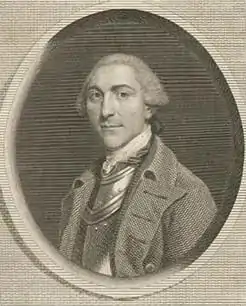 |
29 mars 1782 – 21 janvier 1793 | [12] |
Commander-in-chief (1793-1904)
| Rang | Nom | Illustration | En poste | Source |
|---|---|---|---|---|
| Field marshal | Jeffery Amherst, 1er Baron d'Amherst |  |
1793 – 1795 | [13] |
| Field marshal | Prince Frederick, duc d'York |  |
1795 – 1809 | [14] |
| Général | Sir David Dundas | 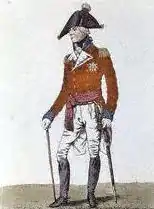 |
1809 – 1811 | [15] |
| Field marshal | Prince Frederick, duc d'York |  |
29 mai 1811 – 22 janvier 1827 | [16] |
| Field marshal | Arthur Wellesley, 1er duc de Wellington |  |
22 janvier 1827 – 22 janvier 1828 | [17] |
| Général | Rowland Hill, 1er Lord Hill | .jpg.webp) |
22 janvier 1828 – 15 août 1842 | [18] |
| Field marshal | Arthur Wellesley, 1er duc de Wellington |  |
15 août 1842 – 14 septembre 1852 | [19] |
| Field marshal | Henry Hardinge, 1er vicomte d'Hardinge | 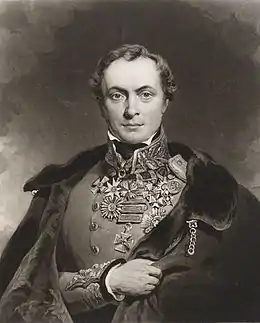 |
28 septembre 1852 – 5 juillet 1856 | [20] |
| Field marshal | Prince George, duc de Cambridge | 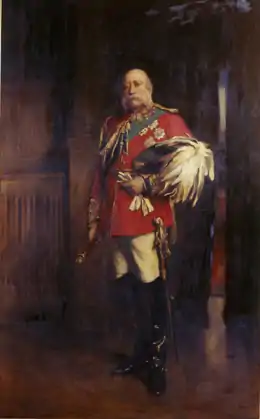 |
5 juillet 1856 – | [21] |
| Field marshal | Garnet Wolseley, 1er vicomte de Wolseley | 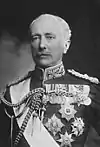 |
– 3 janvier 1901 | [22] |
| Field marshal | Frederick Roberts, 1er comte de Roberts | 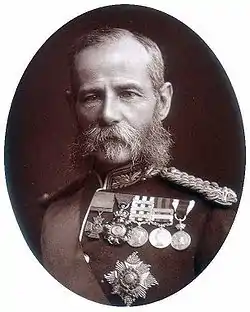 |
3 janvier 1901 – 12 février 1904 | [23] |
Notes et références
- (en) « George Monk », Oxford Dictionary of National Biography (consulté le )
- (en) « James Scott, 1er Duke of Monmouth », Oxford Dictionary of National Biography (consulté le )
- (en) « John Churchill, 1er Duke of Marlborough », Oxford Dictionary of National Biography (consulté le )
- (en) « Meinhardt Schomberg, 3rd Duke of Schomberg », Oxford Dictionary of National Biography (consulté le )
- (en) The London Gazette, no 4948, p. 1, 3 janvier 1711. Consulté le 21 janvier 2014.
- (en) « John Dalrymple, 2nd Earl of Stair », Oxford Dictionary of National Biography (consulté le )
- Heathcote 1999, p. 286.
- (en) « Prince William, Duke of Cumberland », Oxford Dictionary of National Biography (consulté le )
- Heathcote 1999, p. 203.
- (en) « John Manners, Marquess of Granby », Oxford Dictionary of National Biography (consulté le )
- Heathcote 1999, p. 25.
- Heathcote 1999, p. 94.
- (en) « Jeffery Amherst, 1er Baron Amherst », Oxford Dictionary of National Biography (consulté le )
- Glover 1963, p. 128
- (en) « Sir David Dundas », Oxford Dictionary of National Biography (consulté le )
- (en) The London Gazette, no 16487, p. 940, 21 mai 1811. Consulté le 21 janvier 2014.
- (en) The London Gazette, no 18327, p. 153, 23 janvier 1827. Consulté le 21 janvier 2014.
- (en) « Rowland Hill », Oxford Dictionary of National Biography (consulté le )
- (en) The London Gazette, no 20130, p. 2217, 16 août 1842. Consulté le 21 janvier 2014.
- (en) The London Gazette, no 21362, p. 2573, 28 septembre 1852. Consulté le 21 janvier 2014.
- Heathcote 1999, p. 142.
- (en) The London Gazette, no 26676, p. 5923, . Consulté le 21 janvier 2014.
- (en) The London Gazette, no 27263, p. 83, 4 janvier 1901. Consulté le 21 janvier 2014.
Bibliographie
- Richard Glover, Peninsular Preparation : The Reform of the British Army 1795–1809, Cambridge University Press,
- (en) Thomas Anthony Heathcote, The British field marshals : 1763-1997 : a biographical dictionary, Barnsley, South Yorkshire, Leo Cooper, , 368 p. (ISBN 978-0-850-52696-7)
Liens externes
- Portail de l’histoire militaire
- Portail du Royaume-Uni